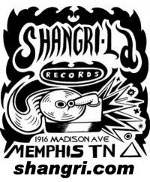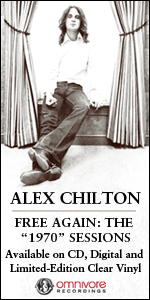Last weekend, the Hi-Tone Cafe hosted none other than Margot and the Nuclear So and So’s. It was their first trip back to Memphis after they headlined The Fareveller Music Festival back in March. The Indianapolis natives have been on a short tour through the south as of late, and our dear old Memphis ended up being the final stop.
I’d yet to see the northern act in a live setting, so I was curious if Richard Edwards’ densely emotional lyricism held up in the court of a live venue.
I got to catch up with Edwards briefly before the show, and we talked about the progression of the band—where they’ve been and where they are now. After a brief discussion, I noticed that every shift in their sound or change in their process seemed relatable within the change of the line-up of the band. As I opened the interview with a question concerning the physical art of their work, he began to give me examples of my argument: “The art work for the first two records seemed to be in a style that the Buzzard artwork clearly divulged from. Was this a conscious decision based on the record’s sound?”
He took a minute to think of a response and then, choosing his words carefully, spoke up. “Some people in the old band kind of dropped off… the old artwork kind of felt in that time period. When we were doing something slightly different, it didn’t sound like those paintings looked.” I continued, “The album Buzzard featured more of a rock vibe than previous albums, was this a conscious decision?” “It just seemed to be the way the band plays those songs, when we went to record it. They’re different songs, but they’re just played louder and by a different band.”
The Hi-Tone behind us was a-buzz with amplifiers plugging in and guitars being tuned. I inquired about record progression. “When you make a new record and have a new sound, is it a progression? Or are you just feeling out other unexplored territory that you would have like to in the first place, given the chance?” “More of the second one. I don’t really think about it [in a progressive way]. I don’t ever think ‘it’s time to do this, or let’s do things this way.’ It’s more unconscious than that, I guess, just write songs, and so far they seem to be different each time out.”
We had talked for a moment, and it seemed the band was warming up, so I ended with a question about the record. “I heard you are finishing your new record. Would you say it references past sounds, and is familial or are you looking to have a different sound? “I’m sure there is [another shift in sound], but it sounds a bit more like the Buzzard thing more than the old stuff. It’s different than that too, definitely has it’s own sound.”
As our conversation closed, and the they were beginning soundcheck I left, only to come back as the night had become official and the bands were all set up. I was curious to see how the new line-up looked, and this seemed to be the evening to test the waters.
The show began with strong local support. Indie rock act the Allied Standard started the evening, filling the Hi-Tone with a new kind of Memphis sound that resonates with strong lyricism and catchy choruses. Youniverse picked up where they left off, with their signature garage-rock sound that seems infinitely relatable to anyone whose ever had those ‘emotion’ things. Although the crowd wasn’t the biggest that the Hi-Tone has seen, those who were there rocked out to the local yocals and gave their love regardless of the popularity of the dance floor. After a final song and gaining a new fan or two, Youniverse stepped off stage in waiting for the coming head-liners.
Since they scaled down the size of the band, it seems that the performance and studio efforts for Margot and the Nuclear So and So’s have been a bit different. The scope of their sound has dropped in scale, while simultaneously becoming more focused. They display less tangents of sudden ‘all over the place-ness,’ and are much more intent on composing a defined sound. The new formation, which has solidified itself with 2010’s Buzzard, is a much more grounded group that relies more on melodies, musicology, and open space than overwhelming the audience with a wall of sound. It’s a good thing too, since the smaller stage at The Hi-tone barely fit the six current members of the band, let alone a full eight.
As the band worked the stage, it became less obvious that they had once been a cavalcade of varying sounds patched together to make grandiose songs. The tracks this time around were as they were—songs that didn’t require ¾ dozen people on stage sounded great, and the songs that had their roots in larger numbers were accommodated and transformed to fit a simplified version in a modern rock group format. Edwards had hugely emotional stints where he’d press the microphone as an ex-lover, trying to persuade it with the utmost of his talent to stay and listen to his heartfelt plea.
Cameron McGill’s Wurlitzer and Erik Kang’s slide guitar added welcomed dynamic to the indie rock verse-chorus and aided Edwards in delivering an impact to all those there to listen. The show ended up being not a disappointment for the days of the larger band, but much more of a filling meal, satiating whomever was open to take in their sound.
It’s kind of fair to say that I left convinced. The band may be smaller (although they still have SIX members), and their sound doesn’t claim as much size as previously, but the heart is still ably intact and beating harder than ever. Check out their previous works including the most recent album Buzzard, and keep an eye on their website for all the latest details on the upcoming album due sometime early next year.
Photos by Amanda Gahan













